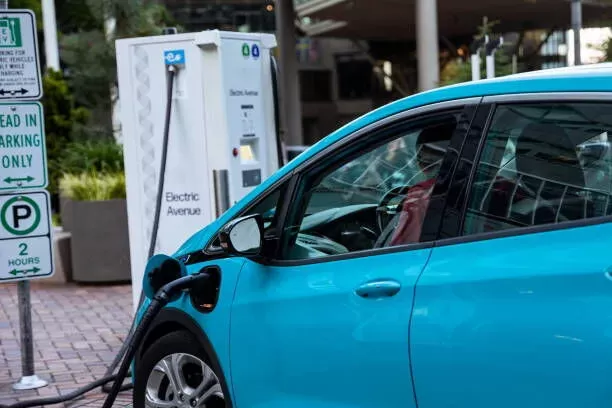Notifications

7 minutes, 26 seconds
-28 Views 0 Comments 0 Likes 0 Reviews

As electric vehicles (EVs) become more popular, range is one of the biggest concerns for potential EV owners. While the range is often seen as a fixed number, it’s actually influenced by several factors. From driving style to environmental conditions, there are various ways to maximize the distance you can travel on a single charge. With the right techniques and efficient use of your EV charger, you can extend your EV's range and reduce the need for frequent recharging.As a professional EV charger manufacturer in China, Topper Company delivers dependable electric vehicle charging station equipment and comprehensive solutions.
The range of an EV is not a static value. Instead, it represents how far your car can travel on the energy stored in its battery, which depends on several factors. Think of the battery as a limited resource that powers various systems in the car, including the motor, air conditioning, heating, and even the weight of the vehicle itself. While battery capacity is important, it's not the only factor—how you drive and manage the vehicle’s energy use can significantly impact your range.
How you drive your EV plays a huge role in determining its range. Here are some tips for driving efficiently:
Gentle Acceleration
Avoid sudden acceleration, as it rapidly drains the battery. Instead, aim for smooth, gradual acceleration to optimize energy use and extend your range. This also makes for a more comfortable and safe driving experience.
Control Your Speed
High speeds consume more energy. To preserve range, keep speeds between 50-65 mph (80-105 km/h), especially on highways. Driving at moderate speeds helps maximize battery efficiency.
Use Regenerative Braking
One of the key benefits of EVs is regenerative braking, which recaptures energy during braking and returns it to the battery. Using this feature whenever possible can significantly extend your range.
Limit Climate Control Usage
Heating and air conditioning can be significant energy drains. Turn off climate control when you don’t need it, or use it sparingly. Many EVs allow you to precondition the cabin while still plugged in, which can reduce the need for climate control while driving.
Plan Your Route
Avoid congested routes and try to choose flatter terrain. Use navigation apps to find charging stations along your route to ensure you can recharge if needed, without wasting time or energy.
In addition to driving habits, other strategies can help optimize your range:
Monitor Tire Pressure
Low tire pressure increases rolling resistance, which can reduce range. Check tire pressure regularly and keep it at the recommended levels to maximize efficiency.
Optimize Climate Control
Precondition the cabin while the car is plugged in and use seat warmers instead of heating or air conditioning to save energy. Avoid excessive use of HVAC systems when driving.
Practice Efficient Driving
Drive steadily and try to anticipate traffic flow. Avoid unnecessary stops and starts to conserve energy.
Precondition While Connected
If your EV has preconditioning features, use them while the car is still plugged in. This warms or cools the battery and cabin without draining the battery during your drive.
Reduce Excess Weight
Extra weight, such as unnecessary items in the trunk or a roof rack, can decrease efficiency. Remove any unneeded cargo to keep the vehicle as light as possible.
Choose Terrain-Conscious Routes
Routes with fewer hills are ideal, as driving uphill uses more energy. On downhill stretches, use regenerative braking to recover energy.
Utilize Eco-Driving Features
Many modern EVs include eco-driving modes, which adjust vehicle settings to optimize energy use. Activate these modes, especially in city driving, to reduce energy consumption.
Master Regenerative Braking
Regenerative braking is a feature you can improve with practice. The more effectively you use it, the more energy you can recover, which helps to extend your range.
Manage Auxiliary Power Systems
Systems like the infotainment, lights, and heated seats draw power from the battery. Turn off any unnecessary features to reduce battery drain.
Maintain Steady Highway Speeds
On highways, keeping a consistent speed without frequent acceleration or braking helps improve energy efficiency and extend your range.
Beyond your driving habits, several factors influence the range of your electric vehicle:
Tire Pressure: Underinflated tires increase rolling resistance, reducing efficiency and range. Maintain proper tire pressure for optimal performance.
Battery Management: Keep your battery charge between 20% and 80% for the best long-term performance. Avoid letting the battery drain completely or staying at a full charge for extended periods.
Temperature: Extreme temperatures can affect battery performance. Cold weather can reduce efficiency, while heat can shorten the battery’s lifespan. Consider using thermal management systems to protect your battery in extreme weather.
Wheel Size: Larger wheels increase rolling resistance, which can decrease range. Opt for smaller wheels if available to improve efficiency.
Maximizing the range of your electric vehicle involves a combination of efficient driving habits, careful vehicle maintenance, and awareness of external factors. By practicing smart driving techniques, managing your car’s systems, and staying mindful of things like tire pressure and temperature, you can extend your EV’s range and get the most out of every charge. With these strategies, you can enjoy the convenience of electric driving without the stress of running out of battery.Know more about Google SEO Directory
China EV Chargers EV Charger Manufacturer EV Charging Solutions

